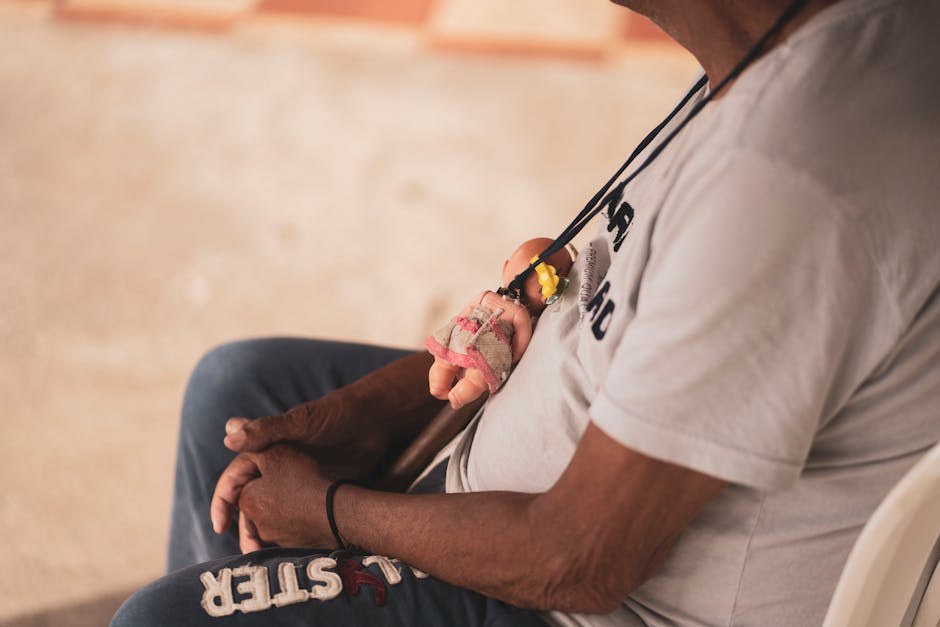Have you noticed the same relationship script playing out no matter who you date – the familiar highs, the identical arguments, the way closeness either feels easy or impossibly complicated? Those patterns are not random. They reflect the way you learned to connect with important people early on and how that learning shows up now. In other words, the way you relate has a name: attachment styles. This guide translates the core ideas behind the science of attachment into everyday language so you can see your habits, name them, and work with them instead of feeling swept along by them.
From Early Bonds to Adult Patterns
Attachment theory began as a lens for understanding why children cling, cry, and protest when separated from caregivers – and why those reactions matter. Over time, the same lens proved useful for romantic partnerships, friendships, and the ways we rely on others as adults. When you look at your current relationship through this lens, attachment styles become a practical map: they highlight the instincts that pull you toward people, the alarms that push you away, and the specific moves you tend to make when intimacy feels uncertain.
John Bowlby’s Core Insight
In the mid-twentieth century, John Bowlby looked closely at what happens when infants are separated from their primary caregivers. He viewed those dramatic protest behaviors as part of survival – not bad habits to be scolded away, but signals from an inborn system that keeps a vulnerable baby close to protection. He called this system the attachment system. The more consistently a caregiver responds with warmth and reliability, the more that system settles – and the more a child learns that seeking closeness works. That foundation tends to echo across time as attachment styles in adulthood.

Mary Ainsworth’s Strange Situation
Psychologist Mary Ainsworth designed a structured observation to see attachment dynamics in action. In a calm playroom with toys and one-way glass, she watched short episodes unfold as caregiver and stranger alternated coming and going. What mattered was not one isolated moment, but the pattern across all of them – how quickly the baby sought comfort, whether comfort soothed the distress, and how freely the baby returned to exploration when the caregiver was back. From these observable patterns, researchers described several attachment styles that later helped adults recognize the same templates in their own relationships.
What “Attachment Style” Means
Your attachment style is the set of expectations and strategies you bring to closeness. It shapes how you reach for support, how you react to distance, and what you do when you feel hurt or unsure. Many people assume only chemistry and shared interests decide who they pick – and those do matter – but attachment styles quietly nudge decisions about who feels safe, how quickly you open up, and what you do when you fear losing someone’s love.
Four Hallmarks of the Attachment System
Although every relationship is unique, the attachment system tends to express itself in four recognizable ways:

- Proximity seeking – the natural pull to stay near the person you rely on.
- Safe haven – turning to that person for comfort when life gets rough.
- Secure base – feeling confident enough to explore because you know you can come back to support.
- Separation protest – the distress that flares when you are apart from the person you’re attached to.
These responses are easy to spot in toddlers at daycare drop-off – and strikingly similar when adults miss calls, read mixed messages, or feel brushed aside. Recognizing these four pieces makes attachment styles clearer and more practical.
How Early Care Shapes Later Expectations
Experiences with caregivers teach the nervous system what to expect from closeness. That learning often starts at home, yet other steady figures – grandparents, siblings, long-term sitters – can influence it too. Over many small moments, children absorb rules about whether reaching out brings comfort or confusion, whether emotions are welcomed or dismissed, and whether reliability is the norm or the exception. Those rules harden into strategies that later appear as attachment styles.
Predictors That Steer Attachment
- Neglect and abuse. When care is frightening or absent, a child learns to brace for harm and to approach closeness with alarm. The signals become scrambled – part of you wants connection, another part expects pain – and that inner conflict can later look like disorganized, stop-and-start closeness.
- Responsiveness. When adults tune in and respond well, a child internalizes, “I matter and I’m heard.” When they don’t, withdrawing can seem safer, and distance may feel like the only way to stay composed. Over time, those lessons consolidate into specific attachment styles.
- Consistency. Reliable support teaches trust; unpredictable care wires people to scan for threat. Inconsistent patterns often seed anxious strategies – seeking reassurance becomes the main way to keep connection from slipping away.
Early Stages of Bonding
Even before words, babies move through understandable phases as they figure out who is “mine.”

- Pre-attachment. From birth into the first weeks, babies signal needs but do not show a clear favorite person.
- Indiscriminate attachment. Over the next several months, they begin recognizing familiar faces and prefer them to strangers.
- Specific attachment. Around later infancy, one person becomes the main anchor – the arms that soothe fastest and the presence that truly settles them.
- Multiple attachments. Soon after, other steady figures become trusted too, expanding the small circle of safety.
None of these stages fix someone forever, yet they show how repeated experiences write rules that later surface as attachment styles.
How Attachment Shapes a Worldview
Care that is warm and steady tells a child the world is navigable and people are worth trusting. Care that is rejecting or chaotic tells a different story – that closeness is risky and love can vanish without warning. Those stories do not stay in childhood; they color adult choices, conflict, and the very meanings we assign to a partner’s silence or smile. This is where understanding attachment styles becomes practical: it helps you translate your automatic reactions before they run the show.
The Main Styles in Adult Life
People vary widely, but the patterns cluster into several common strategies. Seeing yourself in one does not box you in – it simply gives language to your automatic moves so change is possible. The descriptions below reflect how attachment styles often play out in adult relationships.
Secure
When early care felt dependable, closeness tends to feel straightforward. You reach for support without shame, offer comfort without keeping score, and return to independence without drama. In conflict, you ask for what you need and believe repair is possible. People who lean secure still get upset – they simply trust that connection can survive tension. Among attachment styles, this one typically fosters honest, equal partnerships where both people explore and come back to one another with ease.
Anxious-Preoccupied
When love has felt unpredictable, it is easy to monitor for danger. Small gaps – a late reply, a distracted tone – can feel like signs of rejection. The impulse is to close the gap fast: call again, seek reassurance, rehearse worst-case scenarios. The relationship may look intensely bonded from the outside, yet inside it can feel fragile. This style often builds what feels like safety through closeness rituals, but satisfaction slips if emotional presence does not feel guaranteed. Naming this pattern within attachment styles opens room to ask for soothing without turning to panic-driven protest.
Dismissive-Avoidant
When care has felt intrusive, critical, or unreliable, distancing can seem like the only route to calm. Autonomy becomes a shield. Emotions – your own and others’ – can feel messy or unproductive, so you keep conversation on safe ground, rely on yourself, and downplay needs. Partners may experience this as coldness even when you feel caring inside. In this corner of attachment styles, independence is prized, yet relationships strain when self-protection blocks healthy dependence.
Fearful-Avoidant
Here, longing and alarm collide. You want intimacy, but closeness awakens fear; distance brings relief, but loneliness hurts. That push-pull can lead to sudden exits, intense reunions, and dramatic cycles that feel confusing even to you. Because the signals conflict, it’s hard to build predictable connection. Recognizing this pattern in the landscape of attachment styles helps you slow the swings and practice steadier moves even when both closeness and space feel risky.
Some people also show disorganized patterns that do not follow a single predictable route – the responses switch rapidly because closeness has been both a refuge and a threat. While labels are only shorthand, they help describe why certain moments feel so charged.
Signs of Secure Functioning
Curious whether you lean secure in daily life? Look for these themes.
- Trust shows up in actions. You take people at their word and behave in ways that make you worthy of their trust too.
- Sharing feels natural. You talk about your history, needs, and limits without feeling exposed or embarrassed.
- Honesty is a habit. You do not hide parts of yourself to look more lovable – you assume love can handle the truth.
- Commitment is welcome. Being all-in does not feel like a trap; it feels like a choice that supports freedom.
- Empathy leads behavior. You can imagine the view from your partner’s side and act accordingly.
- Boundaries are respected. You state your limits and honor other people’s limits as part of caring well.
These signals do not mean perfection; they mean your default strategies support connection – a hallmark of secure patterns within attachment styles.
When Insecurity Drives the Story
If your body sounds the alarm around closeness, certain signs tend to repeat themselves.
- Fear of being left. Even ordinary separations feel like a prelude to loss.
- Personalizing everything. A partner’s mood becomes a verdict on your worth.
- Craving reassurance. You need frequent proof that you matter and feel unsettled without it.
- Low self-regard. Affection feels undeserved, so you cling hard when it appears.
- Over-reliance on the relationship. Your sense of identity tilts toward the partnership at the expense of your own center.
- Equating love with contact. Physical closeness becomes a substitute for emotional safety, sometimes in ways that backfire.
Seeing these patterns is not a diagnosis – it is a high-resolution mirror. Naming them helps you interrupt loops that attachment styles can create under stress.
Spotting Your Own Pattern
Some people instantly recognize themselves as they read descriptions; others need reflection, a trusted friend’s feedback, or a conversation with a therapist to see their pattern more clearly. Review your relationship history: when did you ask for too little or too much? When did you bolt just as intimacy deepened? Which moments triggered your biggest reactions? Honest review turns abstract ideas about attachment styles into usable insight.
How Patterns Play Out in Romance
Think about how you behave during three key phases: getting close, staying close, and handling conflict. Do you accelerate intimacy to feel safe, then worry it will disappear? Do you keep things casual until emotions run high, then shut down? Do you handle arguments by pursuing, withdrawing, or bouncing between the two? These moves are not random quirks – they arise from attachment styles learning to keep you safe. Once you notice the moves, you can practice new ones.
Why Partners Sometimes Miss Each Other
Romantic partners often “speak love” in different ways – one person uses words, another uses practical help, a third uses quality time. When those languages do not match, both can feel unseen even when love is present. The same is true for attachment styles: one partner may need contact to feel calm while the other needs space to think clearly. Without shared language, both misread the other’s motives. With shared language, you can say, “I need a check-in to settle,” or “I need ten minutes to collect my thoughts,” and both feel cared for.
Working With Your Pattern
Change is possible – it just tends to be gradual because your strategies were learned repeatedly over years. The paradox is that you usually update your attachment strategies inside a relationship, not in isolation. That means practicing new habits with someone who is willing to collaborate. For those who lean anxious, the work often involves tolerating small gaps without spiraling and asking directly for soothing instead of testing. For those who lean avoidant, the work often involves sharing needs early, staying present through discomfort, and letting support in. Across attachment styles, openness and consistency are the raw materials of change.
Recognizing Triggers and Choosing New Moves
Triggers are the moments that pull your hands to the same old levers: the ignored text, the sigh at dinner, the partner who closes a door a little too firmly. When you name those triggers, you can build a plan. Try replacing assumptions with curiosity – “I noticed I got worried when you didn’t reply, can you let me know if you’ll be offline?” – or replacing shutdown with a time-bound pause – “I’m flooded; can we take a short break and come back?” These are small shifts that help every version of attachment styles move toward steadier connection.
Practical Examples You Can Try
- Check-ins with purpose. Set a predictable time to connect so reassurance does not depend on constant monitoring.
- Name the need. Instead of hinting or testing, state the specific comfort you want – a hug, a call, a plan.
- Practice tolerating space. Treat short separations like reps at the gym – brief, intentional, and followed by a positive reconnection.
- Share inner cues. If you tend to shut down, tell your partner what that looks like on the outside so they do not assume indifference.
- Honor boundaries. Limits protect the relationship; they are not a rejection. Saying no kindly is part of secure relating.
None of these steps require perfection. They simply create new experiences, and new experiences are how attachment styles evolve over time.
Can Patterns Shift Over Time?
Yes. Awareness comes first, then repeated practice inside trustworthy relationships – romantic, familial, or therapeutic. Triggers will still happen; the difference is what you do next. If you grew up bracing for abandonment, you can learn to soothe yourself, ask for connection directly, and track evidence of reliability. If you grew up relying only on yourself, you can risk small asks, stay in the room during difficult emotions, and discover that dependence does not erase autonomy. As those repetitions accumulate, attachment styles grow more flexible.
Talking About It With Someone You Love
If you are partnered, bring these ideas into the open. Share which parts of this guide felt familiar and where you want support. Invite your partner to name their patterns too. You are not assigning blame – you are building shared language for moments when old instincts take the wheel. If you are single, prioritize people who show steadiness, respect boundaries, and repair after conflict. Consistency is not glamorous, but it is the soil in which secure habits thrive across attachment styles.
Putting It All Together
Attachment theory began with watchful eyes behind a pane of glass, tracking how babies reached for comfort and returned to play. The same choreography continues in adult life – just with different props and scripts. The partner you call first after a hard day, the way you handle silence, the stories you tell yourself when a plan changes – all of it reflects strategies you learned to stay safe with the people who mattered most. When you see those strategies clearly and practice new ones, closeness becomes less of a puzzle and more of a craft you can keep refining. That is the quiet promise of understanding attachment styles: you do not have to repeat the same old story.